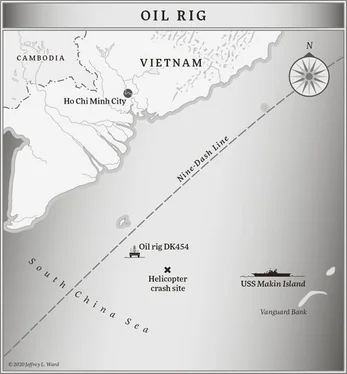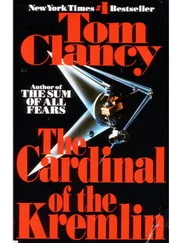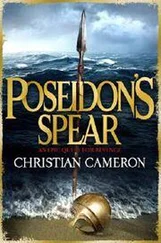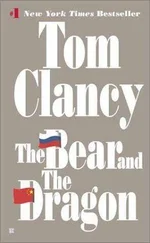Ryan nodded, showing that he was listening. None of this was exactly new information.
Van Damm made an ever so slight get-on-with-it motion with his hand.
Fullmer swallowed, taking the hint. “Satellite imaging, undersea hydrophonic arrays, and P-3cs stationed at Eielson Air Force Base near Fairbanks, Alaska, show the Shang fast-attacks transited the Bering Strait nine days ago, moving southward. The Kilo departed Anadyr at around the same time, but the Yuan remained for an extra week before departing to the south.”
“Okay …” Ryan said.
“Right,” Fullmer said. “The point is, the Yuan -class sub has turned around and has transited the Bering Strait heading north. We’ve picked up a coded signal we believe is coming from an area known as the Mendeleev Ridge in the Arctic Ocean.”
“A submarine in distress?” Ryan asked.
“A DISSUB would make sense, sir,” Fullmer said. “Both Shang fast-attacks have apparently turned around and passed through the Bering two hours ago. The Chinese Kilo appears to be following.”
“Any Russian vessels heading toward the coded signal?”
“There are some standing well off,” Fullmer said. “But none approaching. The newest Chinese icebreaker Xue Long 2 took part in the exercises and remained in Russian waters. It is moving toward the signal from the Laptev Sea.” Fullmer swallowed. “Incidentally, Xue Long means snow dragon … Same as the name of the exercise …”
“Interesting,” Ryan said, looking at van Damm, amused but for the gravity of the situation. Forestall was on his way. That was a good thing.
Fullmer continued. “It’s spring and the Arctic ice is thinning, but it still keeps most surface vessels away.”
“So a coded signal,” Ryan asked. “And returning submarines …”
Fullmer waited a beat. When van Damm didn’t offer anything, he said, “The subs that—”
A knock at the door from the secretaries’ suite preceded Commander Robbie Forestall’s arrival. He apologized for D.C. traffic. Breathing easier now, Fullmer brought the commander quickly up to speed.
Forestall took a stack of 8x10 color photographs from his folder and passed them across the desk to give commentary—and clarity—to Fullmer’s earlier brief.
Ryan tapped the humpbacked submarine in the photo. “Tell me what I’m looking at.”
“That’s the Yuan -class,” Forestall said. “The 771 .”
“And a Yuan isn’t a nuke,” Ryan mused.
“It is not,” Forestall said.
“Dustin mentioned the Chinese boomer,” Ryan said. “The Jin -class. When’s the last time we saw her?”
“Our last contact with her was a week ago, north of the Bering Strait.”
“So are we thinking this boomer is in distress and calling for help?”
“High probability,” Forestall said.
“I can see them sending the Shangs into an overhead environment like an ice floe, but the Yuan ’s a diesel. Seems like a good way to lose another sub.”
“Right,” Forestall said. “But the Yuan ’s not an ordinary diesel-electric. Folks at the Naval Institute describe it as like a Song that resembles the Russian Kilo or a Kilo that has some characteristics of a Song. The Yuan has horizontal control surfaces on his sail and a dorsal rudder—like the Song -class boats. The Kilos have neither of these features, but they do share the same two-over-four torpedo tube configuration with the Yuan . Shipbuilders in Wuhan are turning out this newer class of sub with a rubberized hull coating, seven-blade screw, antivibration rack. State-of-the-art weaponry and sonar come either from Russia and or France. This is a very quiet sub, Mr. President. China has had great success with air-independent power.”
“Meaning they don’t need to surface and run their diesel to charge their batteries,” Ryan said.
“Exactly,” Forestall said. “We’re not sure how long they can stay under, but at least two weeks. We’ve inserted a test section with AIP in one of our Virginia -class boats for testing, but honestly, sir, we’ve put most of our eggs in the nuke basket. France sold AIP hardware to Pakistan. Germany is using the technology as well.”
“So,” Ryan said, “all but one of the Chinese submarines returning to Arctic waters are capable of staying submerged and maneuvering while doing so for sustained periods.”
“That’s correct, Mr. President,” Forestall said.
“To go under the ice …” Ryan said. “Even the Communist Chinese wouldn’t want to risk their nascent submarine forces by sailing them into an overhead environment where they could not surface if they had an issue. So a DISSUB sounds on the nose.”
“True enough, Mr. President,” Forestall said. “We wanted to give you the military picture to give background for what I have next.”
19
“I would not normally have brought something of this nature to your attention,” Commander Forestall said. “But considering the coded signal coming from somewhere around the Mendeleev Ridge …”
“I’m all ears, Robby,” Ryan said.
“Captain Russ Holland, skipper of the John Paul Jones, operating off the coast of Hawaii, kicked something up the chain regarding Arctic waters,” Forestall said. “His chief sonar technician is in possession of an audio file purported to contain noises that some believe to be the sound of metal on metal … and possibly … words … Chinese words.”
Ryan raised an eyebrow. “A sonar tech in Hawaii?”
“Correct,” Forestall said. “These sound transients in question were recorded on a hydrophone during a scientific survey below the ice north of Point Barrow, Alaska. Chief Petty Officer Barker’s former shipmate, a Dr. Patti Moon, left the Navy and went on to earn her Ph.D. in physics. She works aboard the research vessel Sikuliaq , a light icebreaker operated by the University of Alaska Fairbanks. It seems the R/V Sikuliaq was dropping under-ice sensors near an area at the edge of our continental shelf, a place called the Chukchi Borderland, when she recorded the sounds. I should point out that this is less than thirty nautical miles from the point of origin for the coded signal. In any case, Dr. Moon sent the file to her friend Chief Barker on the John Paul Jones and he submitted it through his chain of command.”
“Does he agree with her assessment?” Ryan asked. “This Barker fellow.”
“Enough to kick it up the chain,” Forestall said. “Which bears some serious consideration. I pulled Dr. Moon’s records. She’s originally from Alaska. Received consistently good performance evaluations, but all her commanders noted that she had a penchant for putting far too much credence in conspiracy theories, especially those involving the government. Secret cabals and such. Seems she doesn’t trust Uncle Sam to do right by her.”
“What words?” Ryan asked.
Commander Forestall cocked his head, not following. “Sir?”
“Dr. Moon’s Chinese words,” Ryan said. “I’m assuming someone in your office speaks Mandarin.”
SecDef Burgess walked through the door, already having read the brief.
“Admiral Talbot is on his way,” Burgess said. Talbot was CNO, chief of naval operations. “He was having a root canal.”
Ryan nodded and flicked his hand for Forestall to finish answering the question.
“The sound file is extremely garbled, Mr. President,” Forestall said. “It could very well be fish or moving ice. But if it is someone screaming, my two Chinese speakers are at odds about what this person is saying. One of them thinks fire or danger . I’ve listened to the file myself. Honestly, I find it highly unlikely anyone could pick up human voices outside a submarine. The hulls aren’t like in the movies. We make them quiet. Now, you slam a hatch … drop a pan of cookies … that’s a different story. Voices … I’m not sure about that. I will say, though, the metallic sounds are extremely convincing, especially with the current situation.”
Читать дальше











![Александр Ирвин - Tom Clancy’s The Division 2. Фальшивый рассвет [litres]](/books/417744/aleksandr-irvin-tom-clancy-s-the-division-2-falsh-thumb.webp)
